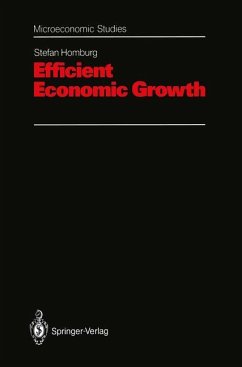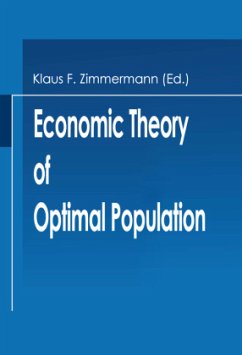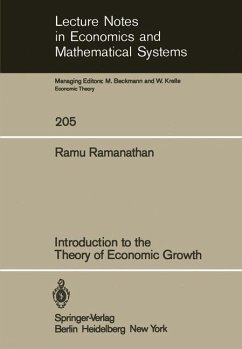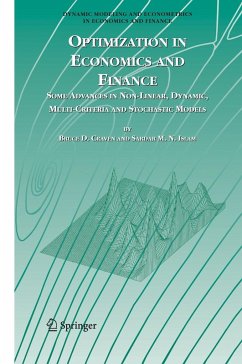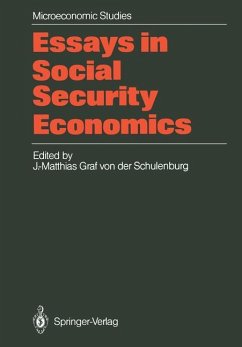
Efficient Economic Growth
Versandkostenfrei!
Versandfertig in 1-2 Wochen
39,99 €
inkl. MwSt.
Weitere Ausgaben:

PAYBACK Punkte
20 °P sammeln!
The book is about the well-known problem that a perfectly competitive economy, even if endowed with perfect foresight, can grow in an efficient manner. The causes of this strange inefficiency are analyzed, and sufficientconditions for efficient economic growth are discussed. The most important contribution is the elaboration of a rather well-known, yet unproved, hypothesis which says that the existence of a nonproducible productive asset, like land, prevents dynamic inefficiency. This is shown to hold outside steady state growth paths. Applications of the theoretical concepts and results are straightforward and are discussed in detail. The applications include the efficient use of exhaustible resources over time, the possibility of "bubbles" in financial markets, the theory of interest rates, and questions concerning optimal social security.
This book contains a revised version of my Habilitationsschrift which has been accepted by the economic department of Dortmund University in 1991. It consists mostly of unpublished material which has been presented during the last years at the universities of Cologne, Dortmund, Hagen, Mannheim, and Munich and at a meeting in Wiesbaden. I am indebted to very many collegues for fruitful discussions. In par ticular, I want to thank Friedrich Breyer, Johannes Hoffmann, Heinz Hollander, Wolfgang Leininger, Bruno Schonfelder, Gerhard Schwodi auer, Hans-Werner Sinn, Klaus Spremann, and lochen Weimann, but this list is surely incomplete. I am especially grateful, however, to Wolfram F. Richter and Niko Wolik who have continually accompanied the evolution of this work and to whom lowe many suggestions as well as corrections. The remaining errors, needless to say, are mine. Cologne, September 1991 Stefan Homburg Contents Chapter 1. Introduction 1 Chapter 2. Dynamic Efficiency 3 2. 1 The Basic Model. . . . . 3 2. 2 A General Theorem on Dynamic Efficiency . 9 2. 3 Some Further Results . . . . . . . . . . . . . . 12 2. 4 Storable Consumer Goods. . . . . . . . . . . . 14 2. 5 The Failure of the First Basic Welfare Theorem 17 2. 6 A Stronger Condition . . . . . . . . 20 2. 7 A Remark on Necessary Conditions. 21 2. 8 Conclusion. . . . . . . . 22 Chapter 3. Interest and Growth 25 3. 1 Commodity Own Rates of Interest 26 3. 2 The Asset-augmented Economy . . 28 3. 3 Interest, Growth, and Dynamic Efficiency . 31 3. 4 Conclusion. . . . . . . . . . . . 33 Appendix: The Cash Flow Criterion.





